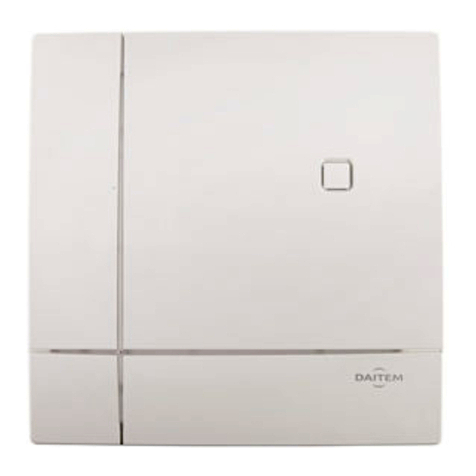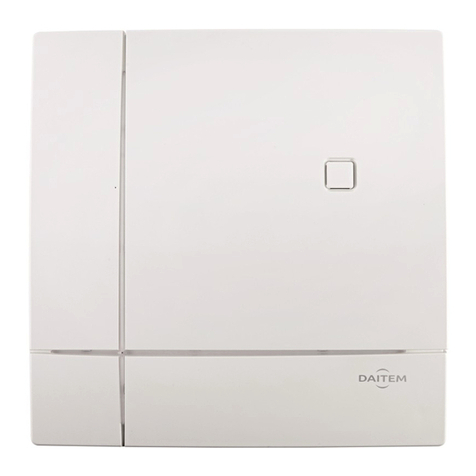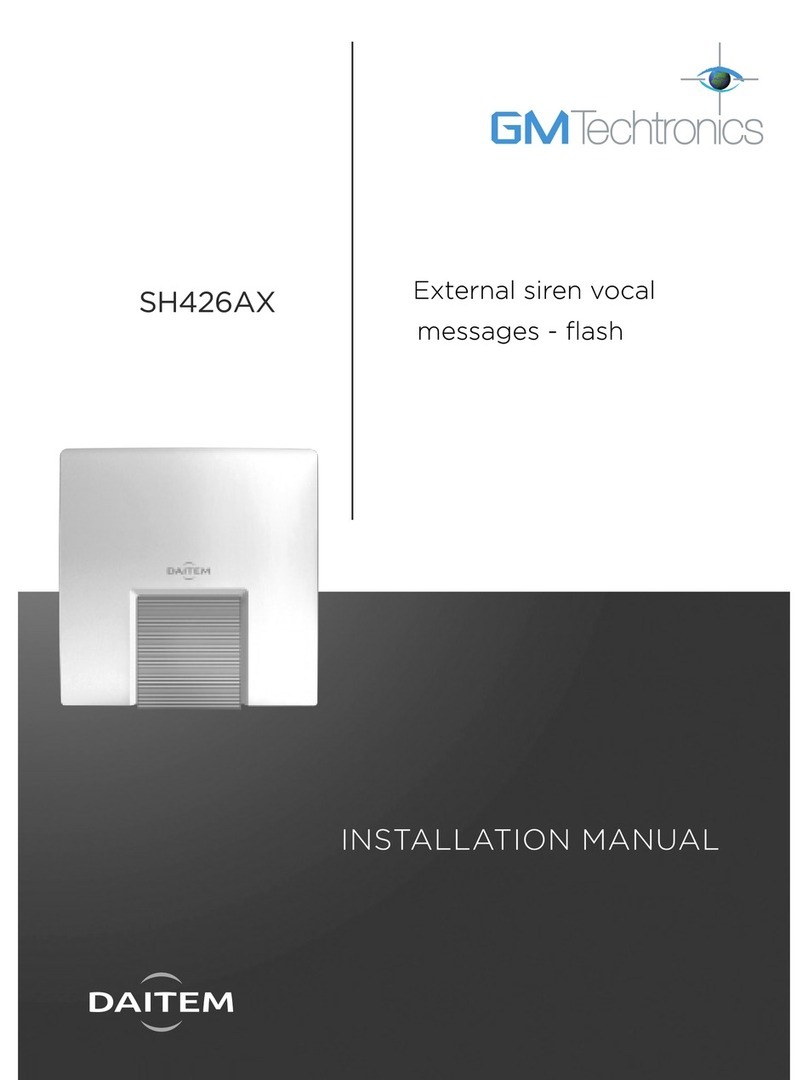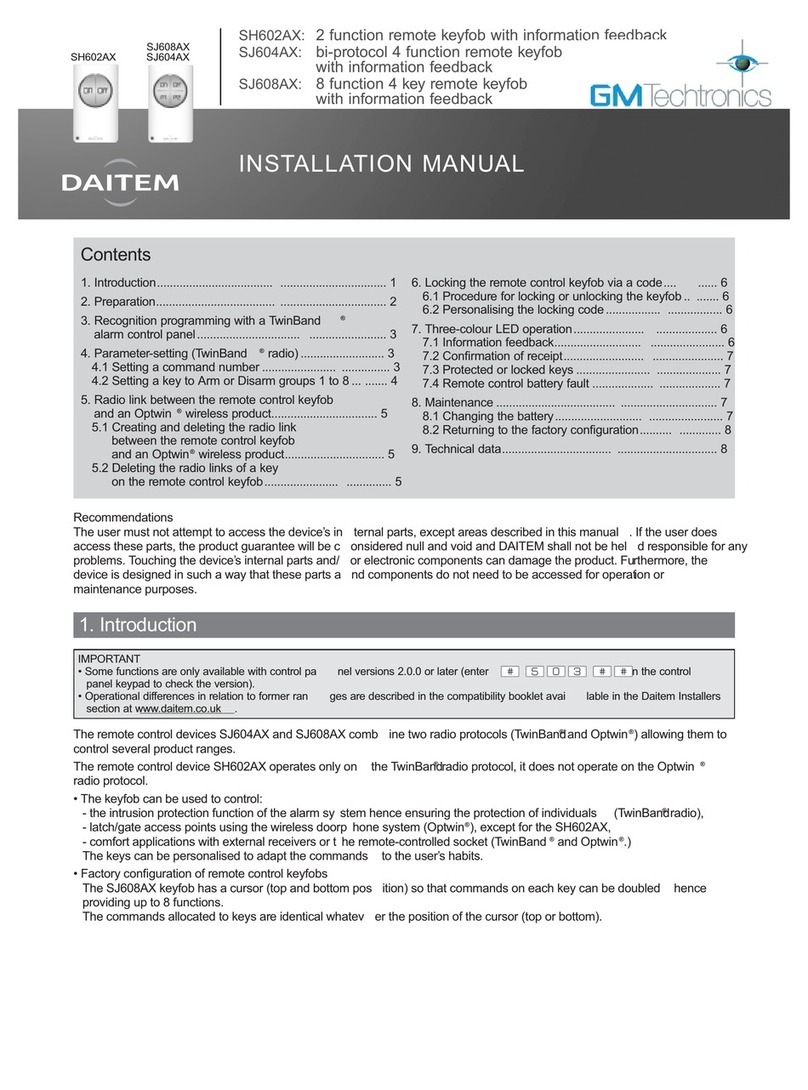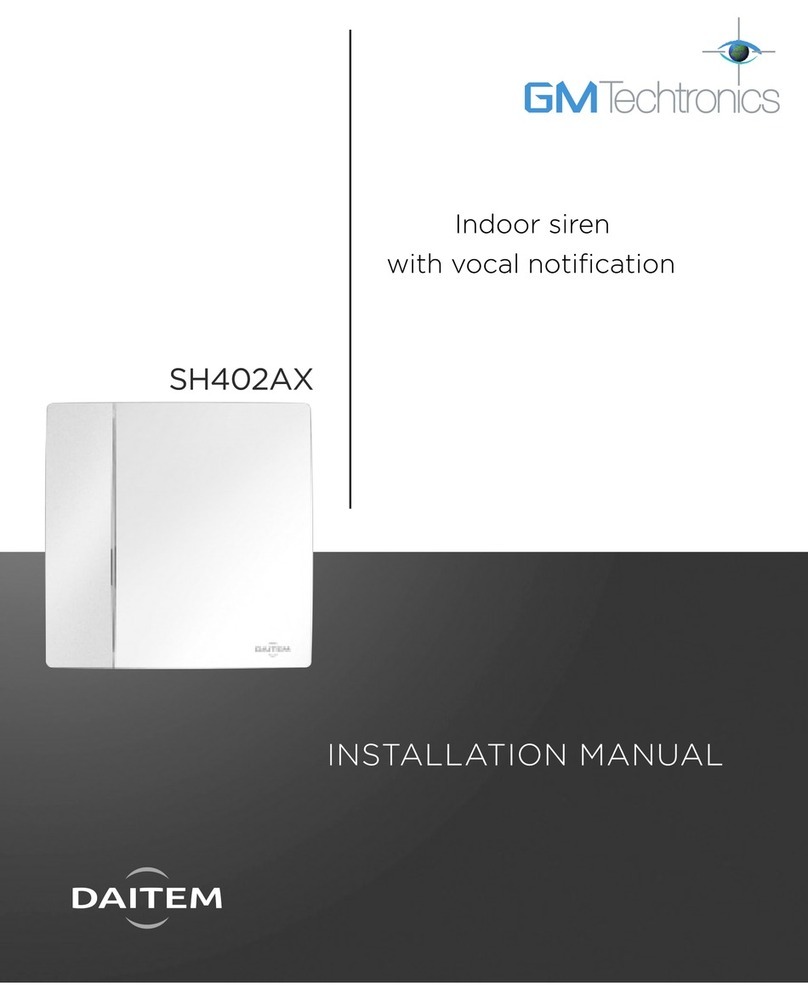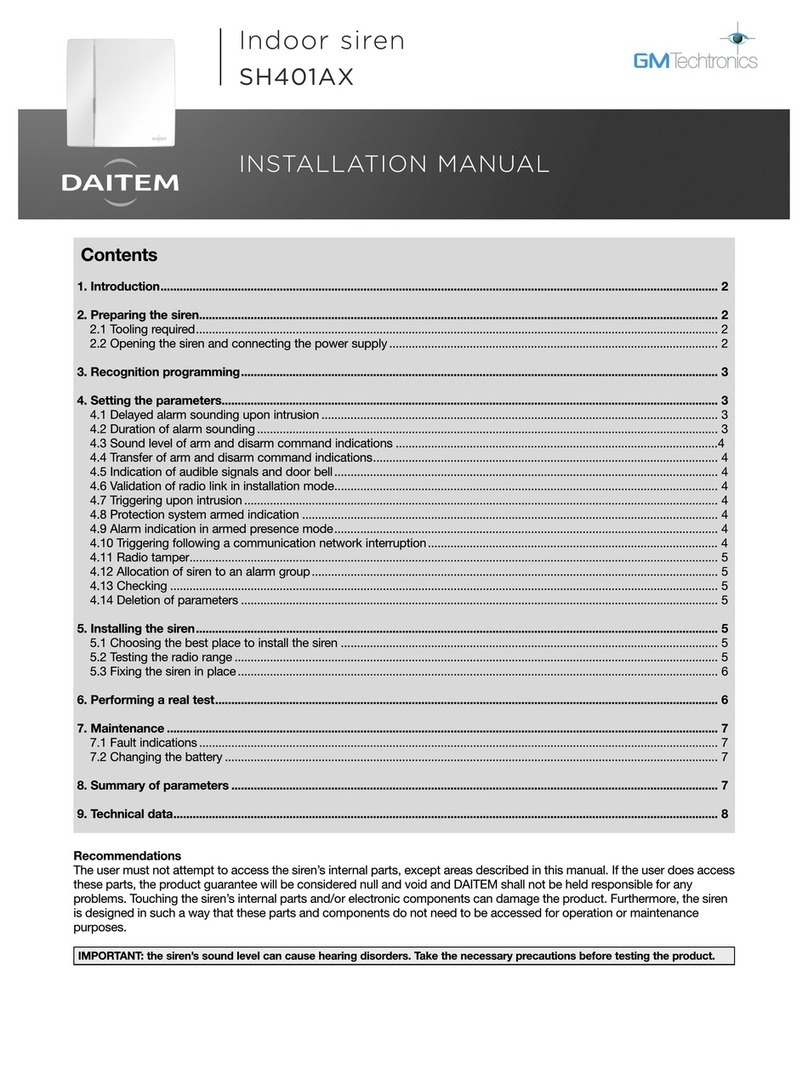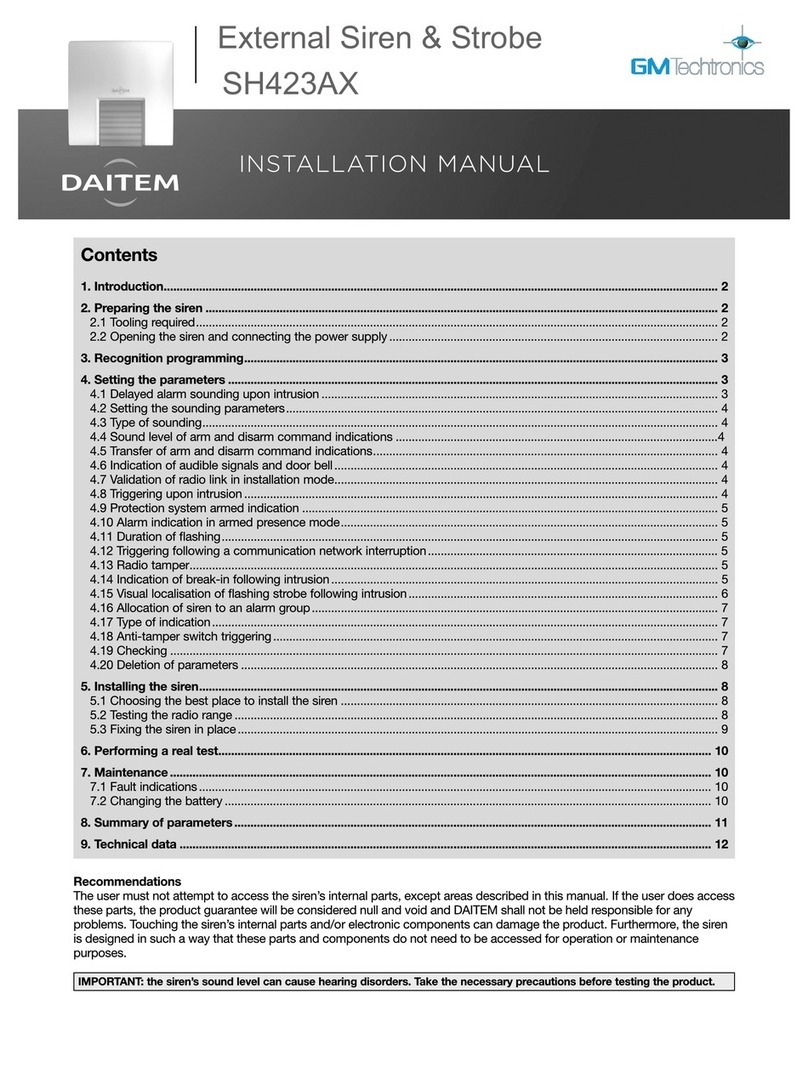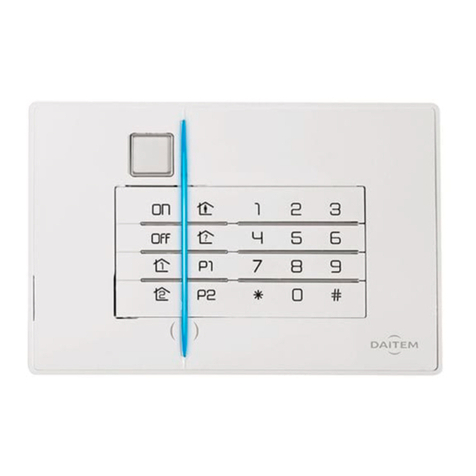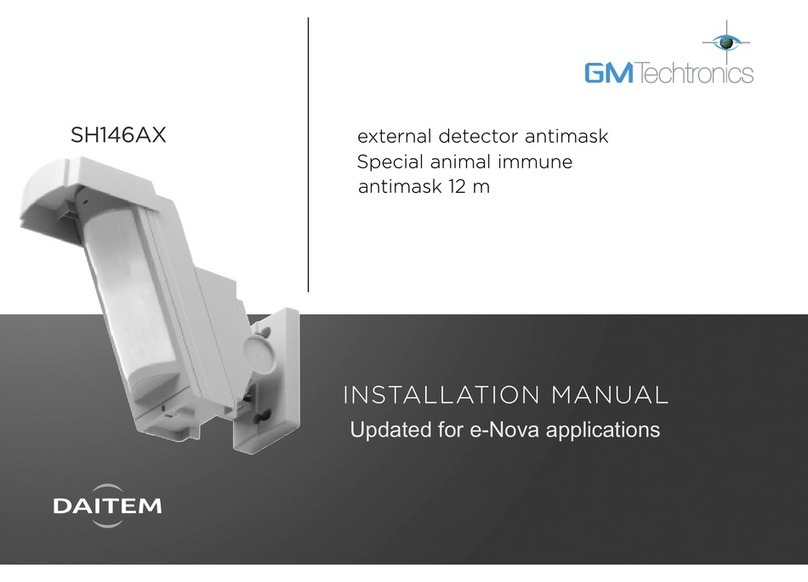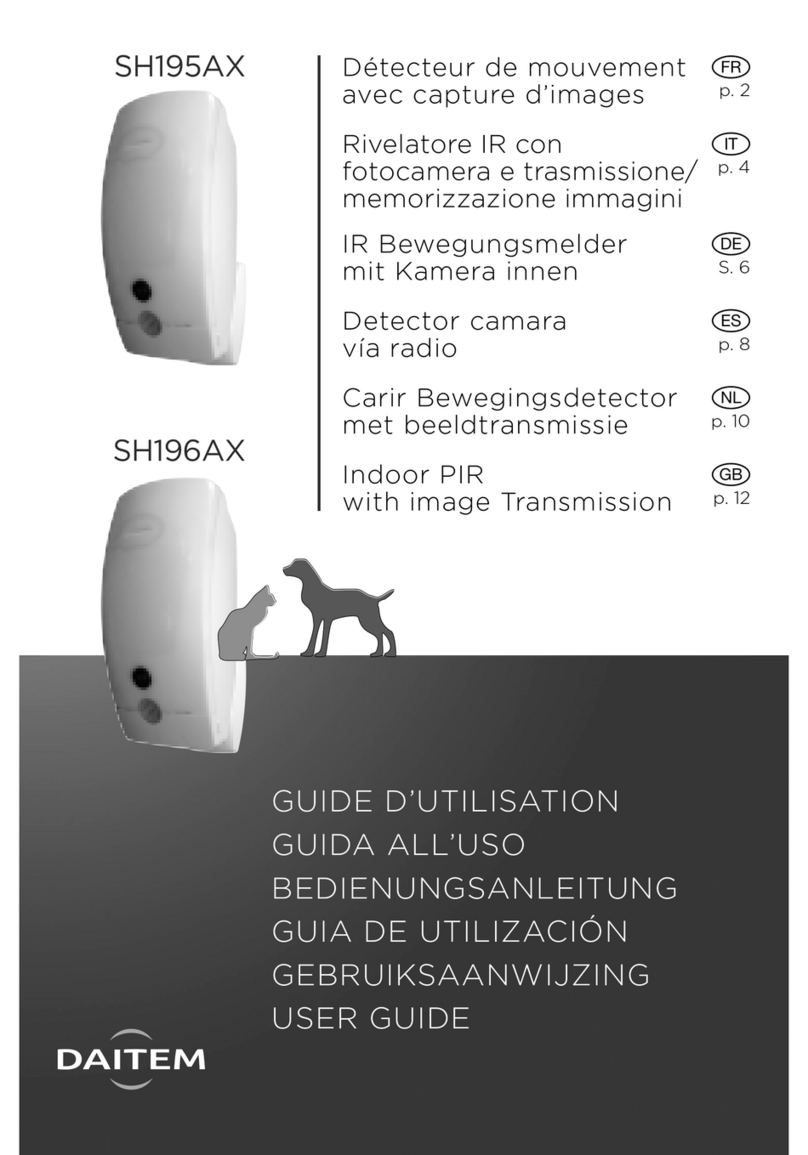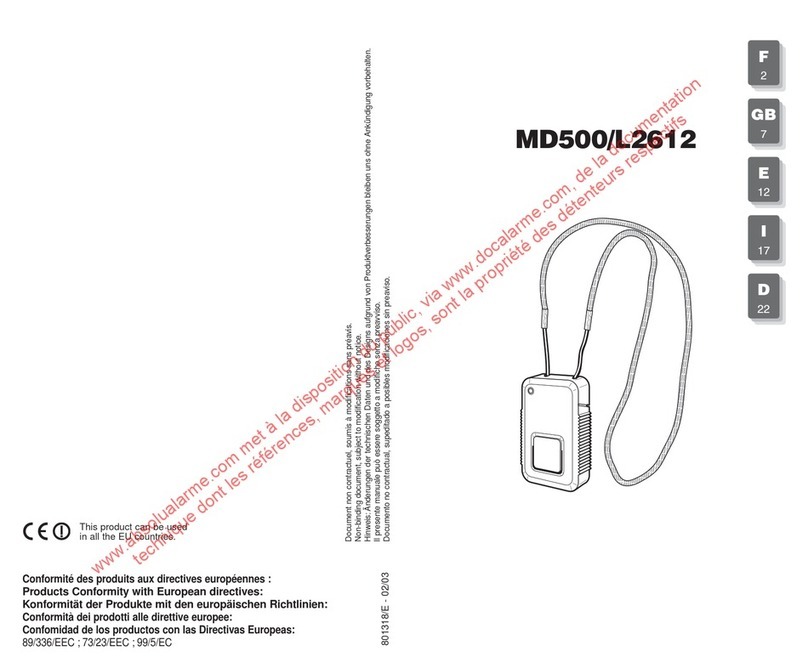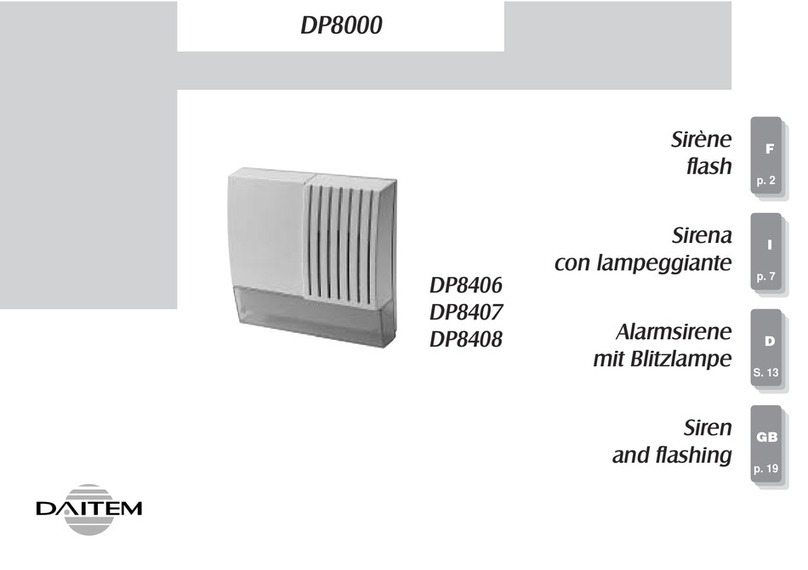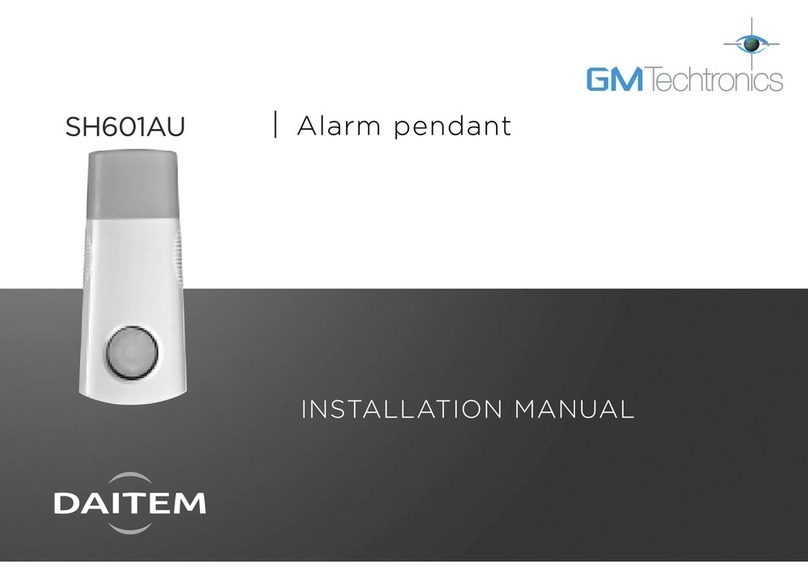3
Daitem security system
Product destination:
The equipment sold by DAITEM is designed to ensure better protection and more comfortable conditions in
homes and a number of professional premises or to ensure the protection and well-being of individuals
according to the technical and environmental limits described in the documents provided by DAITEM and
recommended by retailers.
CE marking and regulations:
The products sold by DAITEM comply with the essential requirements of applicable European directives. CE
marking provides proof of the products’ compliance with these directives and with the standards defining the
technical specifications to be followed.
Communication network (unavailability):
DAITEM reminds users that its systems operate via telecommunication networks (public switched telephone,
radio, GSM networks, etc.), the availability of which cannot be 100% guaranteed.
DAITEM draws the user’s attention to the fact that should the network being used become unavailable this
may have consequences on the availability of its own systems.
Should this situation arise, independent of the will of DAITEM, neither DAITEM nor the manufacturer can be
held liable for any damaging consequences that may ensue.
Ask your retailer for the guarantee and after-sales service application conditions binding
it to the manufacturer.
CONTENTS
Your DAITEM security system . . . . . . . . . . . . . . . . . . . . . . . . . . . 4
Operating your security system . . . . . . . . . . . . . . . . . . . . . . . . . . 5
The information keypads provide information
about device status and messages from the control panel . . . . . 8
Modifying your access codes . . . . . . . . . . . . . . . . . . . . . . . . . . . . 9
Restricting access to control function . . . . . . . . . . . . . . . . . . . . 10
Regularly testing your system: Test mode . . . . . . . . . . . . . . . . . 12
Performing a real test on your security system . . . . . . . . . . . . . 13
Defining access for remote upload/download
service computer operations . . . . . . . . . . . . . . . . . . . . . . . . . . . 14
Your telephone dialler warns your designated
correspondents or keyholders . . . . . . . . . . . . . . . . . . . . . . . . . . 15
The control panel indicates alarms and warns
your correspondents or keyholders . . . . . . . . . . . . . . . . . . . . . . 18
The control panel indicates faults and warns
your correspondents or keyholders . . . . . . . . . . . . . . . . . . . . . . 19
Checking the events log . . . . . . . . . . . . . . . . . . . . . . . . . . . . . . . 20
Remotely operating your security system . . . . . . . . . . . . . . . . . 21
Additional keypad functions . . . . . . . . . . . . . . . . . . . . . . . . . . . 22
